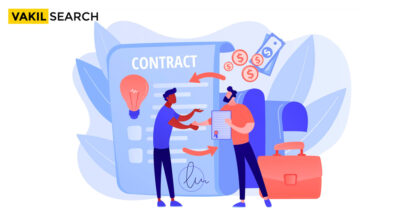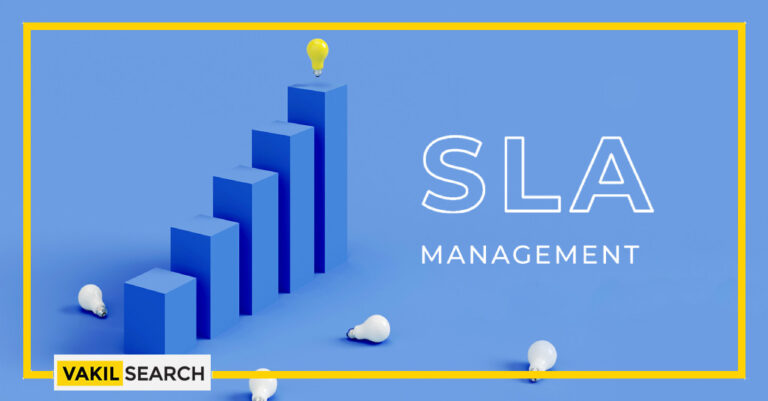Service level agreements are crucial for accountability and clarity between the service provider and the customer. Most of the services use a standard SLA; however, it is crucial to get it reviewed by a legal team.
An SLA, or service-level agreement, is a contract between a service provider and a customer that outlines the levels of service that the provider agrees to deliver. A key performance indicator (KPI) is a metric used to measure whether a company is achieving its desired results. SLAs and KPIs are both important tools for businesses, but they serve different purposes. An SLA sets expectations for the level of service a customer can expect from a provider, while a KPI measures whether a company is meeting its goals. In this blog we will discuss about the difference between service level agreement and KPI.
What is an SLA?
An SLA or a service level agreement is a carefully documented agreement between a customer and a service provider that clearly states the expected level of service and the services needed. The agreement differs significantly between industries, services, and vendors. However, the service level agreement should be carefully designed and examined before subscribing to an expensive IT service to realize the maximum service value from a business and an end-user perspective. It is essential that service providers carefully review the differences between customer-facing outcomes and internal outputs since these are great for defining the service expectations properly.
It is essentially a type of quality assurance. It states the quality of a supplier’s services to its customers, such as reliability, support, and availability. SLAs can empower a customer as they would know exactly what they can expect from a service provider. If the service provider chooses not to provide the services according to the quality described in the SLA, he can be held accountable for it. Hence, an SLA must have measurable standards for service provision. This is crucial since you can only then verify if the supplier meets the quality standardat least s set in the ag. The SLA must be Specific, Measurable, Acceptable, Realistic, and Time-bound. For instance, the supplier must respond within 15 minutes if there are any malfunctions, or the supplier should provide the service 95% of the time at least.
Who Provides the SLA?
Most service providers have a standard SLA, reflecting different service levels at various prices. However, it is important to review your service level agreement with a legal counsel is important. When sending an RFP, the customer must put service levels in the request as this will influence supplier prices or offerings and may affect the supplier’s decision to reply.
What are Service Levels, Rankings, and Priorities?
Service levels are generally described as the services a network service provider offers a customer for a predefined time. For example, in a call center, the service level will carefully measure the percentage of calls an agent answers in a previously established time. It can also calculate the percentage of customers waiting for less than a previously determined time or the percentage of customers that don’t face stock out. There are three service levels, the multi-level, internal, and the customer service level agreements.
In SLAs, a specific ranking system is present that uses a specific ranking value to select one or more SLAs for a record. You can easily apply one or more SLAs to a record based on your particular configurations. You have to set these options at the site level. SLAs are ranked in the following method.
If you can apply for one SLA, but more than one SLA matches a record, you can use the value in the ranking field to select a particular SLA. The matching SLA with the lowest value in the ranking field is applied. However, if you can apply for more than one SLA, all the matching SLAs can be applied. The SLA used to measure the target dates is either the one with the highest-ranking or the one with the most stringent time. Your system administrator determines this setting.
Priority in a service level agreement in the attention or importance assigned to a specific ticket determined by the service level agreement. Usually, there are four major types of priority in a service level agreement, low, medium, high and urgent. Urgent tickets are aptly named as they need urgent attention, and low tickets are not majorly important and can be dealt with later.
Which Services are the Best for SLA?
There is no list by which you can conclude a service level agreement. Therefore, a service level agreement can be created for all types of services. Hence, it is crucial to customize and tailor your service level agreement according to your service or company’s needs. You can look at the examples given below to understand for which services an SLA is suitable.
- Facility management
- Mail delivery
- IT
- Healthcare
- Surveillance
- Repair
- Help desk
In today’s world, since most companies are entirely dependent on ICT facilities, we observe that businesses primarily use service level agreements in that sector. If you own a company, you probably wish to get back to working conditions as soon as possible if something happens to your IT systems, for example, in case of a cyberattack.
What is KPI?
A company, department, or individual’s performance in relation to strategic goals is measured by key performance indicators (KPIs). They represent the progress made toward achieving a particular objective in order to evaluate its efficiency and overall success. Leaders can use key performance indicators (KPIs) to gauge how close the company is to achieving its objectives and pinpoint potential areas for improvement. By providing a comprehensive view and the data necessary to devise the most effective strategies, this may facilitate the decision-making process.
Difference Between Service Level Agreement and KPI
Below mentioned are some difference between service level agreement and KPI:
Both SLA and KPI offer useful information but there are few difference between service level agreement and KPIs. Service level metrics offer data on baseline performance expectations. A documented agreement that meets those expectations is an SLA term.
On the other hand, KPI offers data on the success and efficiency in meeting expectations or organizational goals. While service level agreements ensure that service level metrics do must adopt certain actions not fall short of certain predsts in ensuring that individual results and performance improvements are met exceedingly or accurately.
To improve the service level performance, the engaged service provider, whether external or internal, must adopt certain actions. For performance improvements on KPI and certain metrics, companies must take certain actions internally to complete the strategic objectives.
Conclusion
In conclusion, it is important to understand the difference between service level agreement and KPI. A SLA outlines the expectations and requirements of a service, whereas a KPI measures the performance of that service. By understanding the difference between these two terms, you can ensure that your business is getting the most out of its service providers. Hope this blog regarding the difference between service level agreement and KPI was helpful.
Read More:










